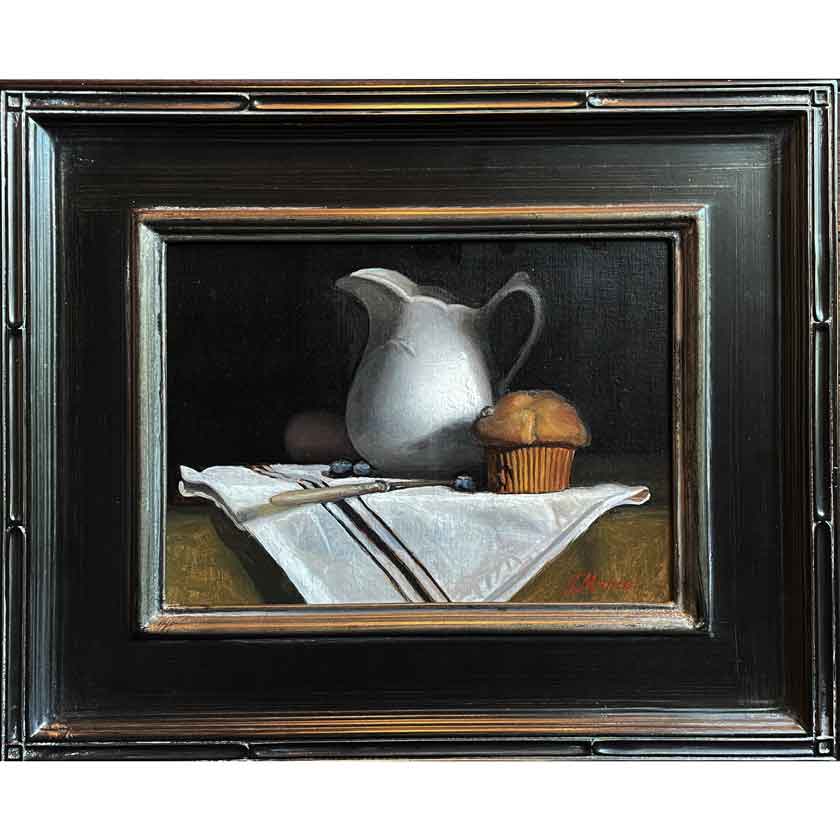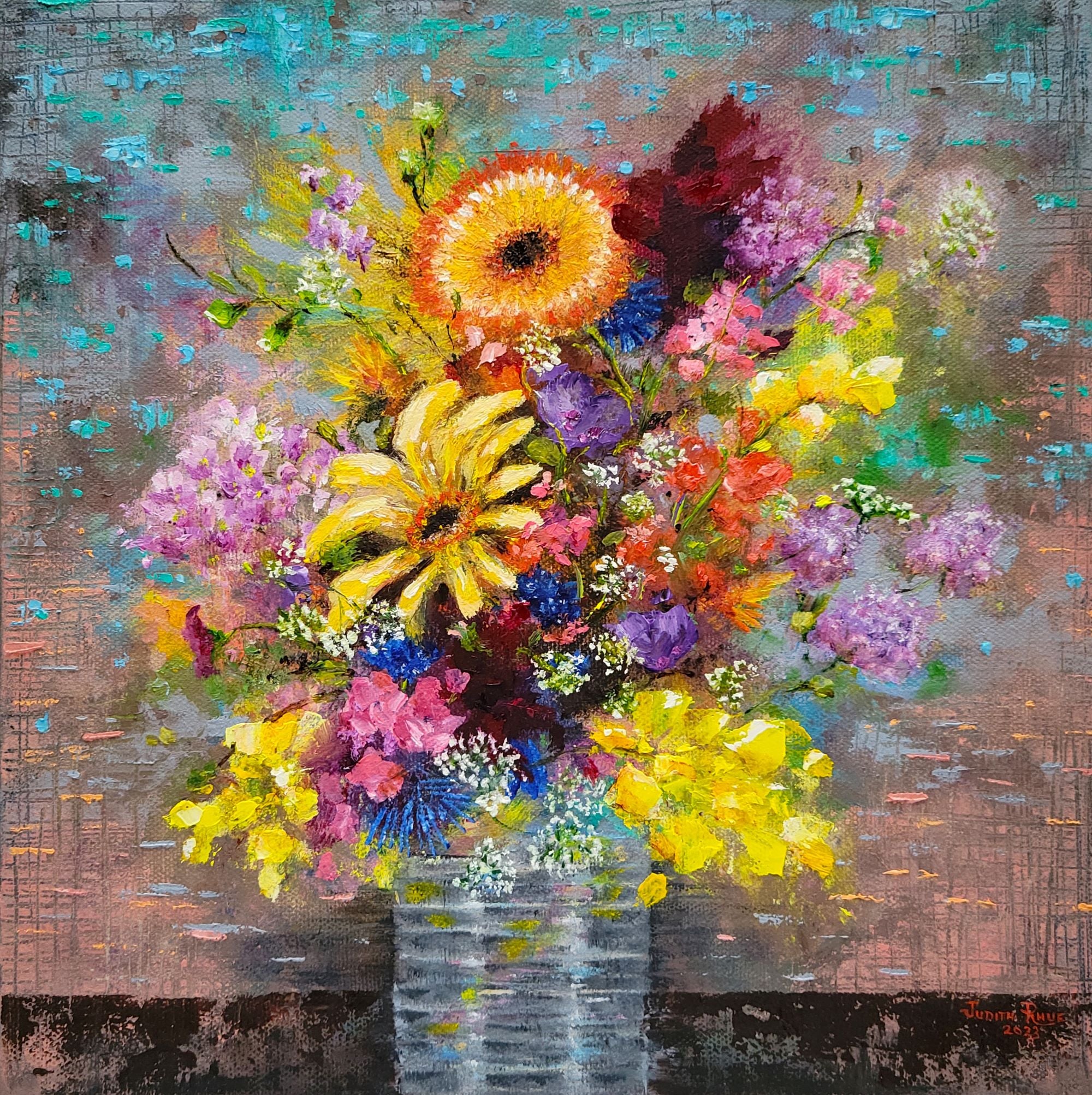What to Take into consideration in Selecting the Perfect Oil Paintings for Your Home Design


Recognizing Your Individual Design
Recognizing one's personal style is necessary when picking oil paintings for home decoration. Individuals should first show on their preferences, considering elements such as color, theme, and psychological vibration. Some might be attracted towards vivid abstract items that evoke power, while others may choose serene landscapes that promote serenity. Recognizing whether one leans in the direction of modern minimalism or traditional realism can direct the selection procedure. Furthermore, personal design often mirrors social influences, experiences, and creative tastes, making it vital to select items that resonate deeply. By straightening their options with their unique visual, individuals develop a natural environment that enhances their living areas, inevitably resulting in a home that symbolizes their individuality and values with art.
Thinking about the Dimension and Scale
Dimension and range play a vital duty in the efficient combination of oil paintings into home design. Picking the ideal measurements guarantees that artworks complement the space rather than overwhelm or underwhelm it (oil paintings for sale). For larger spaces, considerable paints can serve as prime focus, including depth and passion. Conversely, smaller sized artworks can improve comfy areas without triggering mess. When determining on dimensions; a well-placed painting can create harmony and balance in an area, it is vital to take right into account wall surface area and furnishings plan. Furthermore, grouping smaller sized items can produce a cohesive gallery impact, while a solitary big canvas may stand alone as a declaration item. Inevitably, the picked dimension and range need to mirror the overall design intent of the home
Picking the Right Shade Scheme
Picking the best color combination for oil paints is crucial to improve a home's design. It not only enhances existing furnishings yet additionally sets the preferred state of mind for each area. Additionally, the impacts of lighting can substantially influence just how colors are perceived, making careful factor to consider key.
Complement Existing Decor
An unified color palette can change an area, making oil paintings an excellent selection for improving home style. When choosing art work, it is vital to contemplate the existing colors in the room. A paint that complements or contrasts the leading colors can create aesthetic interest. As an example, if an area includes soft blues and whites, an oil paint with similar tones can merge the design, while a vibrant, different item can work as a prime focus. In addition, comprehending the touches in the area's color pattern-- whether cozy or awesome-- can lead the option of art work. Eventually, the best oil painting need to enhance the total aesthetic, producing a natural and inviting setting that mirrors the house owner's personal style.
Set the State of mind
Choosing the ideal shade scheme for oil paintings can greatly influence the mood of a room. Cozy hues, such as reds and oranges, often tend to create an inviting and energetic ambience, making them suitable for social spaces like living spaces. In comparison, trendy tones, such as blues and greens, advertise peace and relaxation, ideal for bedrooms or checking out nooks. Neutral colors, consisting of browns and grays, can use a sophisticated background, allowing other aspects to radiate. Furthermore, considering the psychological influence of certain shades is essential; for instance, yellow can evoke happiness, while darker tones can infuse a feeling of dramatization. Ultimately, selecting a shade scheme that lines up with the preferred atmosphere will improve the general design and personal expression within the home.
Consider Lighting Consequences
When curating a home decor plan, the influence of lighting on the perception of oil paints can not be ignored. All-natural light, as an example, can dramatically modify the colors and textures of an artwork, boosting its vibrancy or muting its tones. On the other hand, man-made lights can produce shadows or highlights that might either detract or match from the paint's general impact. Consequently, home owners must think about the intensity and sort of light in a room when choosing oil paintings. Cozy illumination can improve earthy color schemes, while cooler lights might fit extra lively, contemporary art. Inevitably, comprehending how various lighting influences color understanding is vital in picking the best oil paints that integrate with an area's ambiance and aesthetic objectives.
Selecting a Theme or Subject
When choosing a motif or subject matter for oil paints, personal style preferences play an essential duty in making certain that the artwork resonates with the property owner. Additionally, considering the performance of each room can guide choices that boost the total atmosphere. Ultimately, preserving consistency with the existing color combination is essential for producing a cohesive and inviting area.
Individual Design Preference
Personal style choice plays an important function in picking oil paintings that improve home decoration. People usually incline details motifs or subject issues that reverberate with their tastes and individualities. As an example, a person with a penchant for nature may choose landscapes, while someone attracted to urban life may select cityscapes. Abstract art can attract those who appreciate modern-day looks, while classic still lifes may bring in reactionaries. The picked art work must mirror the property owner's identification, developing a cohesive atmosphere. In addition, color design and psychological tones of the paintings can substantially influence the room, adding to a preferred ambiance. Ultimately, straightening the art work with individual design preferences assures that the picked oil paintings serve as purposeful centerpieces in the home.
Area Performance Consideration
Just how can space performance affect the choice of oil paints? The objective of an area plays an essential function in identifying the ideal style or topic for oil paintings. In a peaceful bed room, abstract pieces or relaxing landscapes can stimulate serenity and leisure. On the other hand, in a lively living-room, dynamic and dynamic artworks might enhance the energetic ambience. Eating areas can take advantage of food-related check here or still-life paints, which can stimulate discussion and cravings. Furthermore, the selection of art work should line up with the tasks happening in the room; for instance, motivational pieces in a home workplace can influence efficiency. Eventually, selecting paintings that resonate with the space's feature guarantees an unified and welcoming environment.
Color Combination Harmony
A natural color palette is crucial for selecting oil paintings that improve the total decor of a home. When choosing artwork, people should think about the existing colors within the area, consisting of wall surface tones, furnishings, and accessories. Paintings that match or comparison sympathetically with these components can elevate the aesthetic appeal of a space. Additionally, choosing a style or topic that reverberates with the house owner's personal design creates a much more welcoming ambience. Tranquil landscapes may match a soothing resort, while vibrant abstracts could invigorate a lively event room. Eventually, the appropriate mix of shade and theme guarantees that the artwork not just fits within the decor yet likewise adds to a combined and meaningful home environment.
Reviewing the Emotional Influence
What sensations do particular oil paints evoke in a viewer's room? The psychological influence of an art work can greatly affect the atmosphere of a space. Lively shades and dynamic brush strokes might motivate energy and creative thinking, while softer shades and tranquil landscapes can stimulate tranquility and peace. Abstract items frequently motivate self-questioning, welcoming visitors to analyze the feelings communicated. Additionally, the subject matter plays a necessary duty; portraits can impart link, while nature scenes may promote a feeling of peace. Customers might also find nostalgia in artwork that mirrors individual experiences or memories. Eventually, choosing oil paintings that resonate psychologically can change a living environment, creating a space that really feels authentic and welcoming to its residents.
Discovering the Perfect Positioning
Where in a home can oil paints best improve the general aesthetic? Placement is considerable for making best use of the impact of oil paintings. In living areas, large pieces can work as prime focus over fireplaces or sofas, drawing attention and stimulating discussion. Entranceways and hallways gain from smaller sized, organized jobs, producing an inviting atmosphere. In rooms, softer, tranquil landscapes or abstracts can promote leisure when hung above the bed. Dining areas can include dynamic pieces that boost appetite and discussion. It's essential to consider lighting; all-natural light can change the painting's look, so setting artworks where they obtain suitable lighting. Inevitably, thoughtful positioning can raise the mood and cohesiveness of a space, making the artwork a basic part of the home's style.
Budgeting for Your Art work
Establishing a budget plan for art work is crucial for any person looking to improve their home style. It assists to specify economic borders, ensuring that the choice process remains sensible and delightful. Possible customers must consider their general costs capacity, consisting of expenses for mounting, installation, and upkeep. Looking into different cost ranges for oil paintings can additionally offer important insights right into what to expect. Additionally, people may want to prioritize their choices, whether they are attracted to emerging musicians or established names, as this will considerably impact rates. By setting a clear spending plan, art fanatics can concentrate on searching for pieces that not just resonate with their visual but likewise align with their monetary objectives, resulting in a satisfying purchase experience.
Regularly Asked Questions
Just how Do I Preserve and Look After Oil Paintings?
Caring and maintaining for oil paints includes maintaining them in a stable setting, staying clear of straight sunshine, cleaning carefully with a soft fabric, and sometimes getting in touch with a specialist conservator for cleaning or repair needs.
Can Oil Paintings Be Hung in Humid Locations?
Oil paintings can be awaited humid areas, yet caution is advised. Excess moisture may trigger paint to deteriorate or canvas to warp. Proper air flow and environment control can assist minimize prospective damages over time.
What Is the Distinction Between Original Art and Prints?

How Do I Pick a Frame for My Oil Paint?
Choosing a framework for an oil paint includes taking into consideration the artwork's design, shade combination, and dimension. A well-selected structure enhances the item, enhancing its aesthetic while securing it from damages and contributing to its discussion.
Are There Particular Musicians Recognized for Home Design Oil Paintings?
Lots of musicians specialize in oil paints ideal for home decor, consisting of Claude Monet for impressionistic landscapes, Gustav Klimt for attractive themes, and Georgia O'Keeffe for dynamic flower make-ups, each offering distinct styles to improve indoor rooms. Understanding one's personal style is crucial when picking oil paints for home design. Choosing the best color scheme for oil paints is vital to enhance a home's style. A harmonious color palette can transform a space, making oil paintings an ideal selection for boosting home decoration. Individual design choice plays a crucial role in choosing oil paintings that improve home style. A cohesive color scheme is important for choosing oil paints that improve the general design of a home.